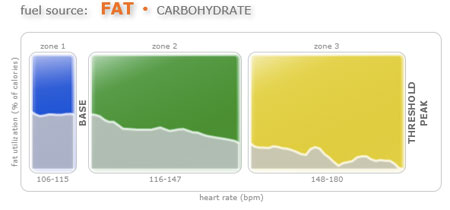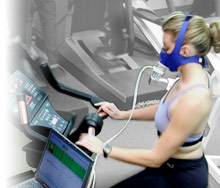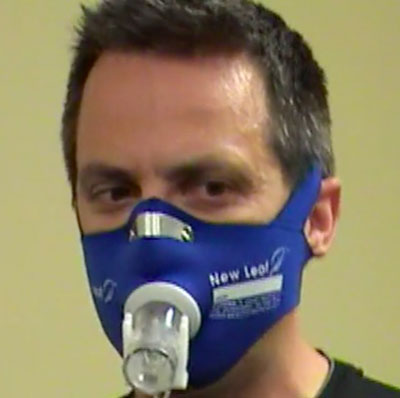|
|
|
|
|
F I T N E S S C O A C H ' S C O R N E R
What is Leaf Metabolic Testing and why is it so important? |
|
What is the New Leaf Metabolic Testing System?
Our New Leaf metabolic assessment and training program is based on decades of medical research and proven scientific know-how. It measures both the oxygen levels and the carbon dioxide levels in your breath. With an accurate measure of both oxygen and carbon dioxide, you get a clear picture of your body’s complete fuel composition. That is, you know exactly when you’re burning the energy-dense fat fuel as opposed to when you’re burning the less-efficient carbohydrate fuel. You know the precise heart rate you need to work up to, and how long you should exercise at that intensity. You know you’re burning fat, not just time. No guesswork required. Whether you’re just starting to exercise or you’re training for your next marathon, you can boost your metabolism. And that means you can achieve your goal of better health, fitness, or athletic performance—when
your exercise and nutrition plans are based on your personal metabolic profile.

What is my metabolic profile and why is it important?
Think of it as your metabolic fingerprint: It’s unique to you, and it holds all the info needed to create a highly successful, personal exercise training plan. Your metabolic profile helps you determine how long you should exercise and how intensely (probably not as hard as you think!). Your profile also provides insight into the nutritional choices that will improve your health, increase your overall fitness, and ultimately enhance your athletic performance.
New Leaf Metabolic and Resting Assessment
Our New Leaf metabolic assessment is a two-step process. First, there’s the Resting Metabolic Rate assessment. The first part measures your resting metabolic rate (RMR). Your Certified Personal Trainer will help you position the mask over your nose and mouth, and then you will be seated in a chair while you breathe naturally while you stay awake. What the RMR reveals is the number of calories your body requires to go through its daily work of sleeping, eating, breathing, and so on. Consider this: Let’s say your RMR is 1300 calories.

If we take into account your overall lifestyle expenditure, we figure out your body needs 1690 calories to maintain its weight. If you eat 1500 calories, and you burn 500 during a workout, you’ve got 1000 calories available for your body to do its daily necessary work and that’s 300 fewer than your RMR. While a deficit may sound like a good way to drop some pounds, in reality your body will slow its metabolism to compensate for the lack of calories needed for daily function.
Basically, you want to stay as close to your RMR as possible to reap the most benefit from your metabolism.
The second part of the assessment measures your metabolic rate during exercise. You’ll put the mask back on, and for 10 to 15 minutes, you’ll walk or jog on a treadmill at increasing levels of intensity. This is where you’ll learn how many calories your body burns while exercising; whether those calories come mainly from fat, carbs, or a combination of both; and at what intensity level you burn calories most efficiently.
This information will help you and your Certified Personal Trainer chart a speedy path to redefining your fitness. A personal daily workout plan ends the guesswork about how often and how intensely to workout. Just follow the plan, and you’ll get results.

Please contact us
at (408) 356-2136, or email FitnessInfo@lgsrc.com
for additional information or any questions you may have.
|
|
|
|
|
|